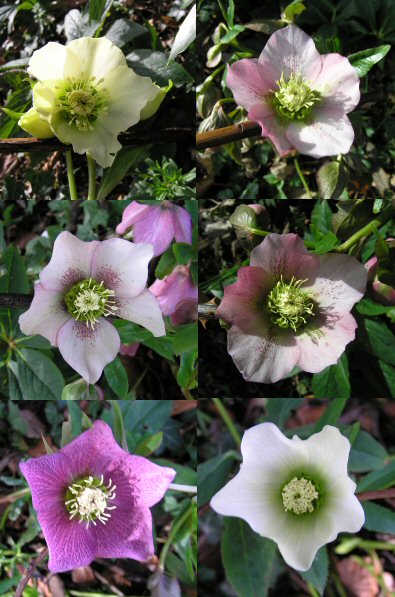
Helleborus x hybridus
Lenten or Christmas Rose
Location
On the path from the Church in The Rookery and the raised bed beyond the steps close to Diana.
Description:
There are some 200 or more named varieties of this plant and most are in the range of white to magenta, with pinks and mauves, spotted or unspotted, being common. There are also greens, yellows, blues and many other possible variations not to mention virtually endless combinations of spotting and veining. The flowers have a range of shapes and sizes, with the possibility of doubles or semi-doubles, from round cup-shaped overlapping sepals to pointed star-shaped sepals. Often referred to as Helleborus orientalis it is now generally accepted that most are H. x hybridus as are nearly all stemless (acaulescent) varieties. We refer to ours as Hellebore 'Hinton Hybids' as most are self-seeded crosses.
Site and Care:
Their dark green, glossy foliage is maintained over winter but in late January or February it is helpful to cut back the old foliage to better view the emerging flower stalks. The buds usually emerge from the soil sometime between January and March, although they may be earlier or later depending on their genes, as well as the local
weather conditions. Open to partially shaded locations suit them best, in any type of soil enhanced with leaf mould or compost but avoid sites that dry-out in summer. Although they resent being moved propagation is by division of established clumps. To answer the often asked question, 'When should they be divided'; it can be at almost any time of the year but early to mid-spring or early autumn is generally the most successful. Alternatively, they can be grown from seed or self-sown seedlings can be encouraged or transplanted.

